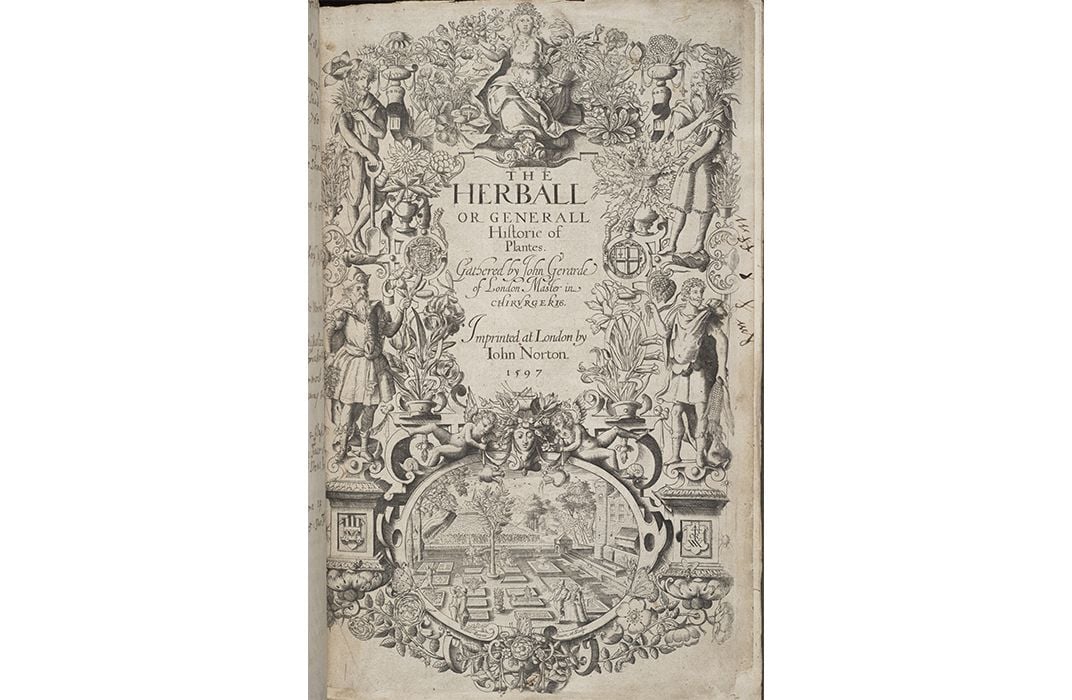Is This a Portrait of Shakespeare? One Historian Says Yes, Many Say No
Many experts doubt whether the engraving found in a 400-year old book is actually the Bard himself
:focal(1040x277:1041x278)/https://tf-cmsv2-smithsonianmag-media.s3.amazonaws.com/filer/81/cf/81cff029-47c1-45e4-aab9-cc837d6af7f6/sil30-05-001.jpg)
A historian and botanist named Mark Griffiths recently claimed that he had discovered a portrait of William Shakespeare in an engraving on the title page of 400-year-old book. If he is right, it would be an extraordinary discovery. However, the world has been here before: Over the years many have pointed to paintings, sculptures and even a death mask as depictions of Shakespeare. Most proved to be fake. Experts already have spoken up with doubts about the new claim. (One of these rare books, The herball, or, Generall historie of plantes gathered by John Gerarde, is held in the collections of the Smithsonian Libraries.)
Only two known likenesses of the playwright exist. The Droeshout portrait is an engraving printed in the frontspiece of the collected works of Shakespeare (the First Folio), published in 1623. The second is the bust on Shakespeare’s funerary monument in the choir of the Holy Trinity Church in Straford-on-Avon. Both were created shortly after Shakespeare’s death in 1616. Both portray a balding, older man.
A third likeness, called the Chandos portrait, may have a good case, but it’s still tinged with uncertainty.
This new claim would have been made while Shakespeare was alive. It’s a simple engraving, with not enough detail to really say if resembles the later likenesses or not. For The Guardian, Mark Brown reports:
He argues that an engraving on the title page of a 400-year-old book about plants contains four identifiable figures - one of whom is the Bard aged 33 looking very different from the round-faced bald man we know from the First Folio of his collected works.
Griffiths has apparently worked for years to disprove his initial theory that the portrait was of Shakespeare. He finally laid out his reasons for this belief this week in the magazine Country Life. The book in which the portrait is said to appear is the first edition of The Herbal of Generall Historie of Plantes by horticulturist John Gerad, published in 1598. Only about 15 copies of it still exist, reports Harry Readhead for Metro. The engraving is by an artist named William Rogers.
Griffiths case lays out an elaborate decoding of the flowers, symbols and decorations surrounding the figure of the four men. The other three figures beside the maybe-Shakespeare were easy enough to identify, but the fourth required work. Brown details each of the encoded meanings Griffiths saw in the engraving, including things like:
- A figure four and an arrow head with an E stuck to it. In Elizabethan times, people would have used the Latin word “quater” as a slang term for a four in dice and cards. Put an e on the end and it becomes quatere, which is the infinitive of the Latin verb quatior, meaning shake. Look closely and the four can be seen as a spear.
- A W – for William? And Or? A few months before it was engraved, Shakespeare’s father was granted a coat of arms with a golden background. The heraldic term for gold is Or.
Griffiths also argues that Shakespeare and Gerard, the horticulturalist who wrote the book, shared the same patron and therefore knew each other. Shakespeare may have helpled Gerard with the Greek and Latin in the book, he adds. "All of that adds up to Shakespeare," he says "I can’t make that – and believe me I’ve tried – add up to anybody else but Shakespeare.”
However, other experts were immediately skeptical, especially given the past record purported likenessess of Shakespeare have earned. (Take for example the Flower portrait, which contained chrome yellow paint from 1814, revealing a painting date more recent than the 1609 date on the image.)
“One has seen so many claims on Shakespeare based on somebody claiming to crack a code," Michael Dobson, director of the Shakespeare Institute at the University of Birmingham told The Guardian. "And nobody else has apparently been able to decipher this for 400 years. And there’s no evidence that anybody thought that this was Shakespeare at the time." In the Metro article he says that he "‘wasn’t sure that Country Life’s reputation will recover."
"I see there a figure who is dressed like a Classical poet, with a green bay on his head, but that doesn’t make him Shakespeare," says Paul Edmondson, head of research and knowledge for the Shakespeare Birthplace Trust, in the Metro article.
John Overholt, the curator of early modern books and manuscripts at Harvard University’s Houghton Library criticized the claim on Twitter:
I thought the Shakespeare portrait thing was stupid, before I saw the evidence.
Now I think it's REALLY stupid. pic.twitter.com/N3qbPsLJYM
— John Overholt (@john_overholt) May 19, 2015If you want to take a crack at the code yourself, here's a larger version of the engraving, showing the detail of the engraving.
